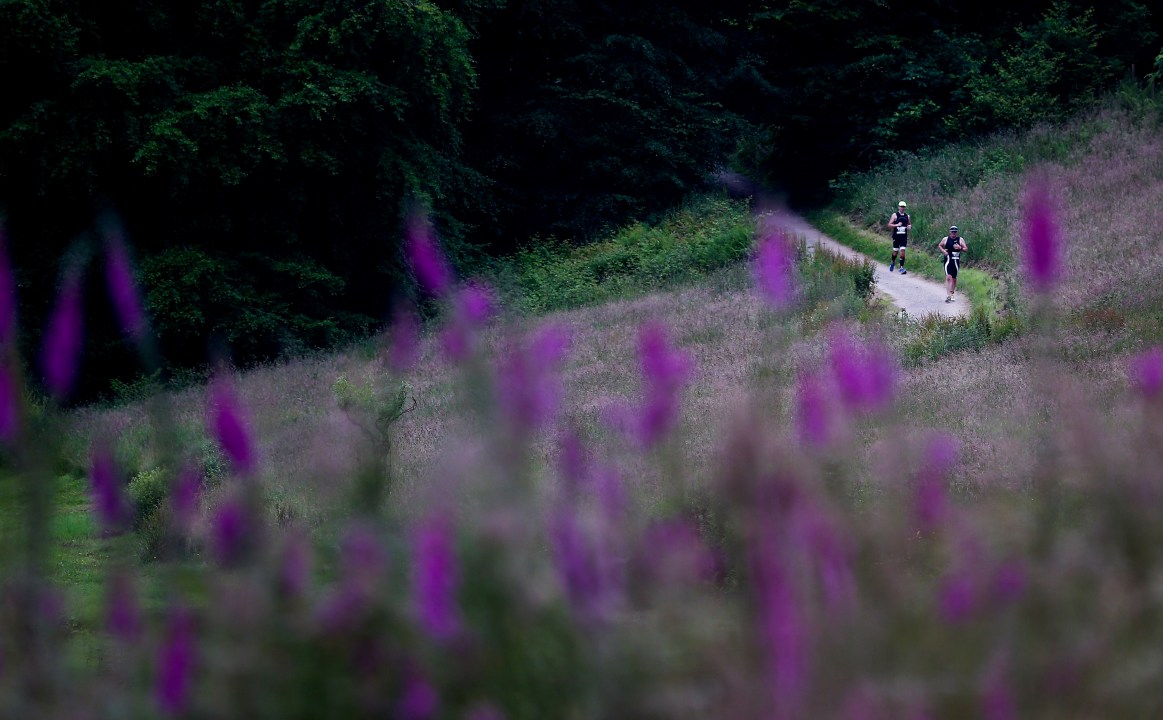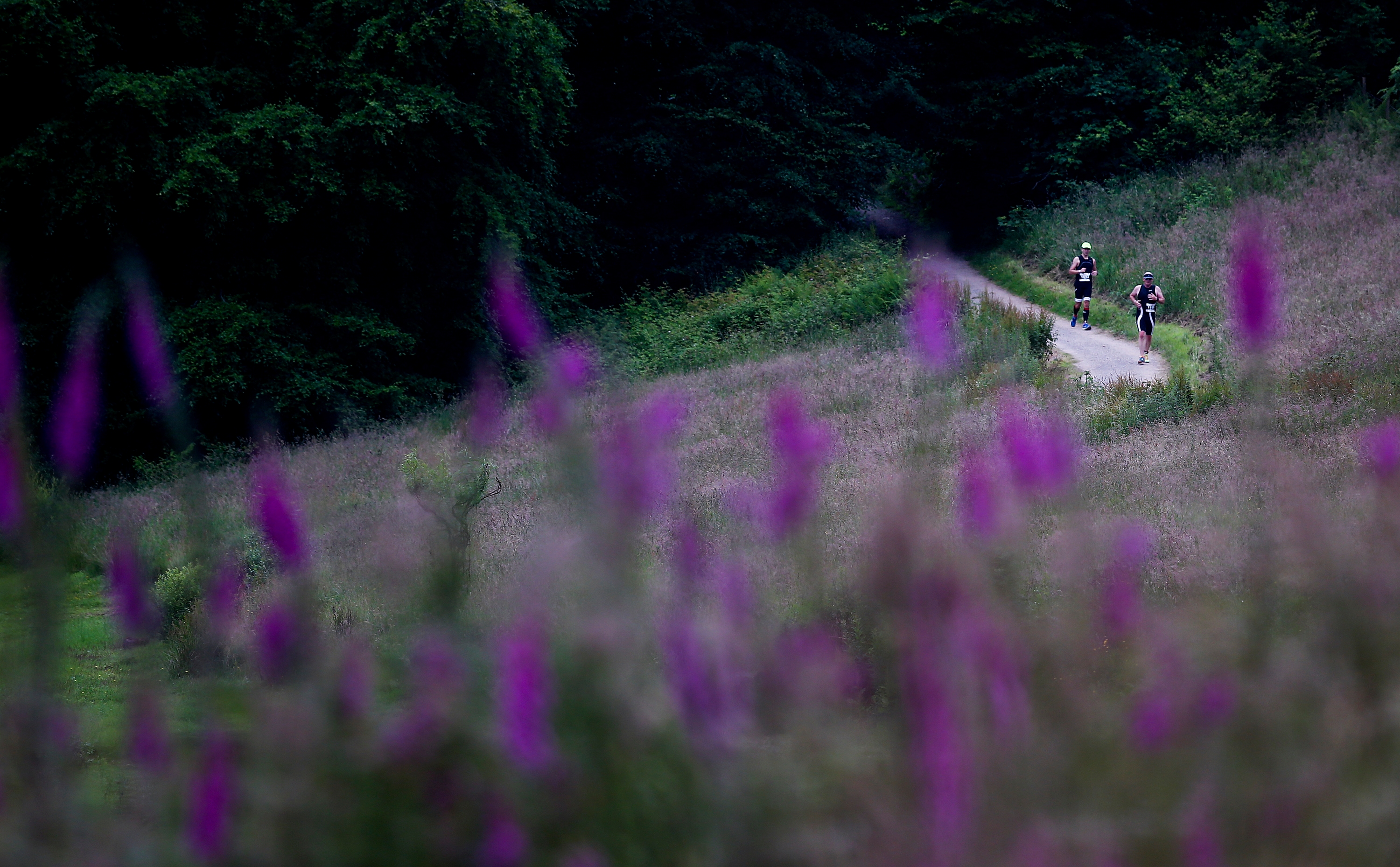This morning was the first time that my father, Robin Hanbury-Tenison, had ventured beyond
his veranda since coming home two weeks ago from a Covid-induced stay at Plymouth
Hospital. He’s very weak but we’ve borrowed a mobility scooter from a local friend and I
convinced him to take a turn of the garden with me to smell the flowers and see what’s
blooming. He visibly perked up while navigating our gravel paths and pointed out ragged
robin, purple loosestrife and wood anemones, all of which have sprung forth while he lay
sedated in intensive care. I trotted along beside him vigilantly, ever ready to throw my
shoulder into the scooter if it looked like he was going to turn it and tumble down one of our
precipitous slopes. Predictably, he is not behaving like the sick man he is and still drives like a
teenager heading off on their first date. Noticing some hawthorn trees in full flower beside
the path led me to consider the similarity between some of our native trees and the current
global pandemic.
To the untrained eye, it can be tricky to differentiate between many of our British trees for much of the year. Bark, branches and crowns all tend to look the same in winter but in spring identity becomes far easier. Everything flowers to its own schedule and this is the time when leaves and blossoms allow for characteristics that are hidden for much of the year to suddenly be worn out on sleeves throughout the woods.
Like many of us in lockdown, I have been noticing nature more with every day
Like many of us in lockdown, I have been noticing nature more with every day, and becoming more appreciative of the subtle nuances in our indigenous flora. For many years I have found the hawthorn and blackthorn to be particularly challenging to tell apart. For most of the year, they are both leafless, thorny, windswept and stunted hedgerow trees that a passer-by would likely lump into the same camp. Their weapons are loaded with quite different bullets though and while a hawthorn scratch is likely to heal quickly with no complications, a stab from a blackthorn can make it seem like Sleeping Beauty got off lightly with her spinning wheel. Blackthorns often snap off within a wound and can cause infection, arthritis, swollen joints and frozen limbs. It is nasty to behold and the effects can be permanent. These two common native trees might look very similar but they can wound us in drastically different ways when provoked.
It has been in the last few weeks, at a time when hawthorn and blackthorn begin to show their individuality, that scientists have begun to identify some of the key differences between influenza and coronavirus. As a layperson, I remember many naysayers back in February and March condemning the over-reaction of the government and telling us with great authority that coronavirus was no different to seasonal flu. ‘Yes, it kills some older and weaker people, but really we shouldn’t be making such a fuss over nothing. The economy is far more important.’
Now we know that there are often severe complications with coronavirus survivors that influenza doesn’t cause. One of these is a tendency towards extreme sedation delirium when recovering from intubation and ventilation. My father is a glowing example of this and, in the month since he was woken from his coma-like slumber, he has struggled to remain fully anchored in reality and to gain control of his memory, his wits and his reason. We are being warned that this might lead to mental health problems in the coming months and my mother, wife and I will be watching him like hawks for any symptoms. There are also increased risks of liver, kidney and heart conditions as well as a general weakening of the physiology that it doesn’t seem influenza sufferers would expect. Thankfully, so far, my father seems to be gaining in strength every day and we are hopeful that the mobility scooter and zimmer-frame will only be temporary companions to his convalescence.
Could it be that influenza and coronavirus are only beginning to show their true colours to the non-scientific among us at the same time that spring allows the amateur woodsman to identify our more nuanced spiky neighbours? The superstitious still believe that bringing hawthorn into the home presages bad luck. In medieval times, people believed that it was linked to the Great Plague as the blossom smelt of putrefaction. This is because the chemical trimethylamine is found in the flowers and released as they rot. It is the same chemical found in decaying human flesh. We still have good reason to be wary of influenza; it takes many lives and causes much suffering. Country children also have good reason to be cautious of hawthorn. The thorns are sharp, painful and unforgiving. Perhaps as spring grants us the opportunity to delineate between the marginally dangerous hawthorn and the vicious blackthorn, now is the time to drop any last comparison between seasonal flu and Covid-19 and accept that the world is tackling a far thornier virus.







Comments